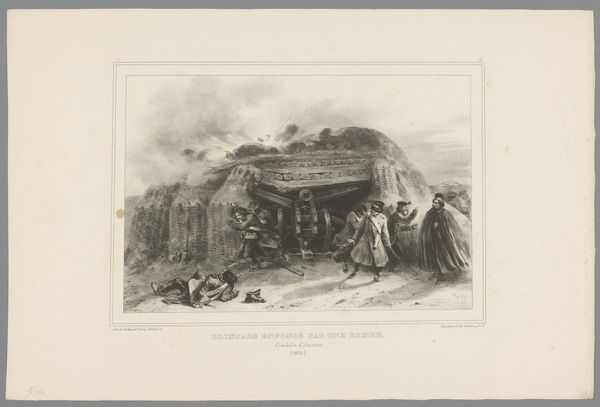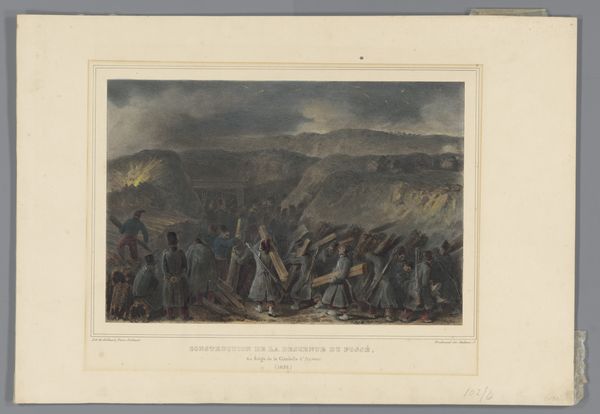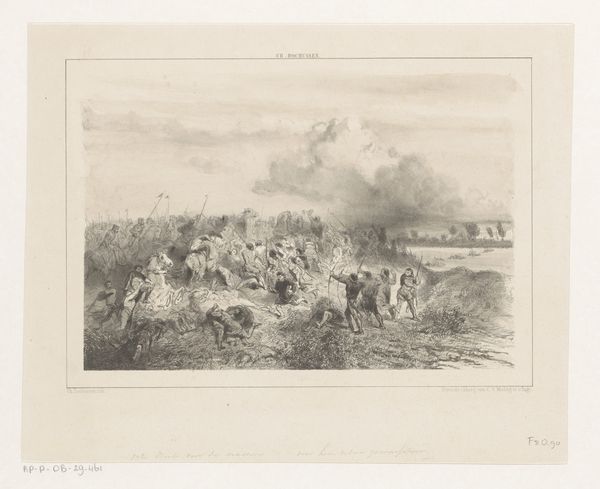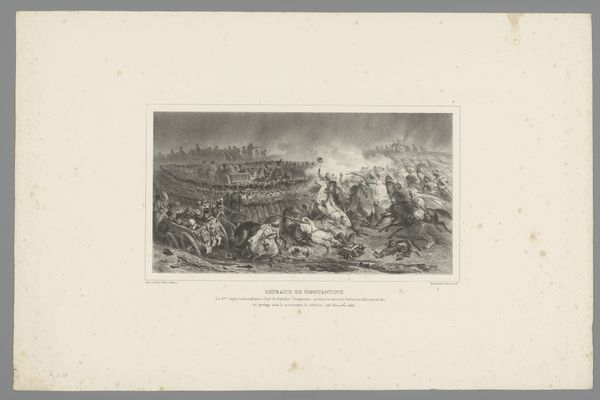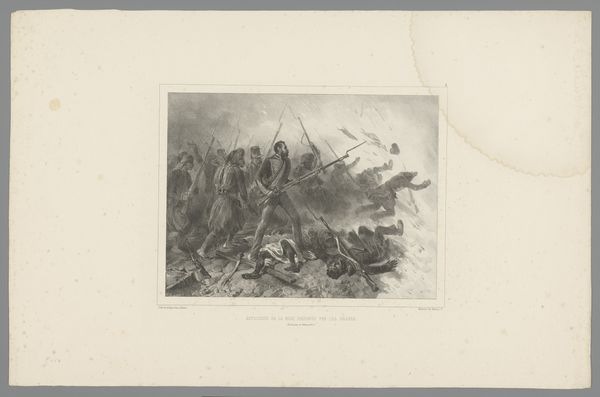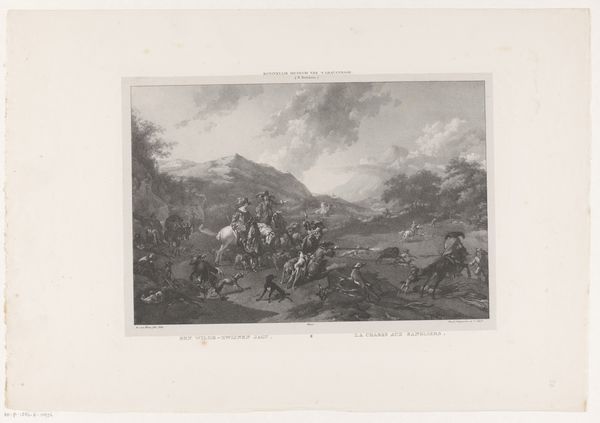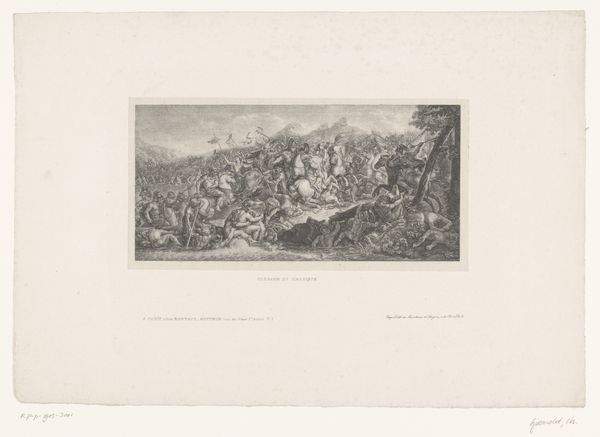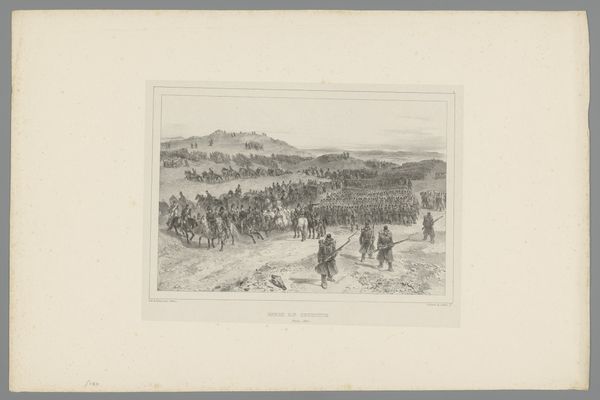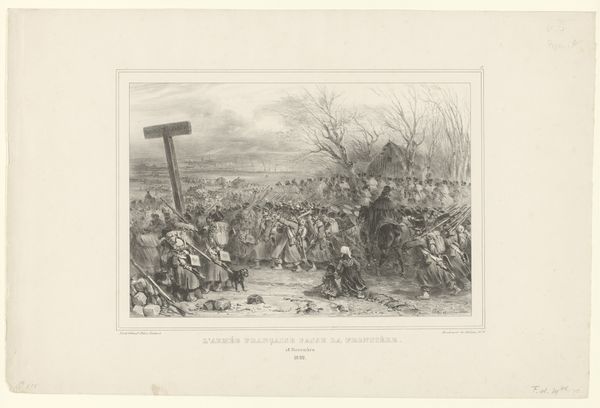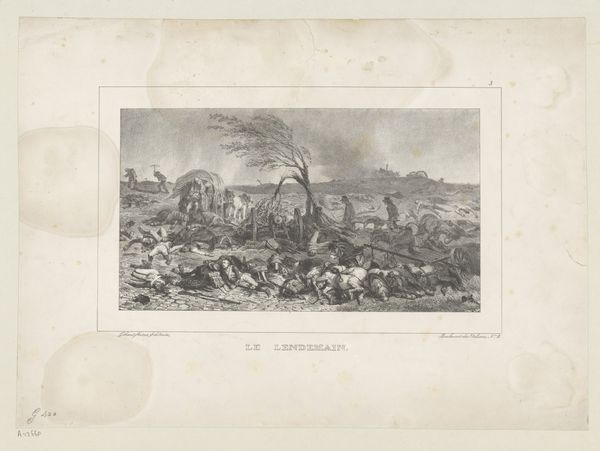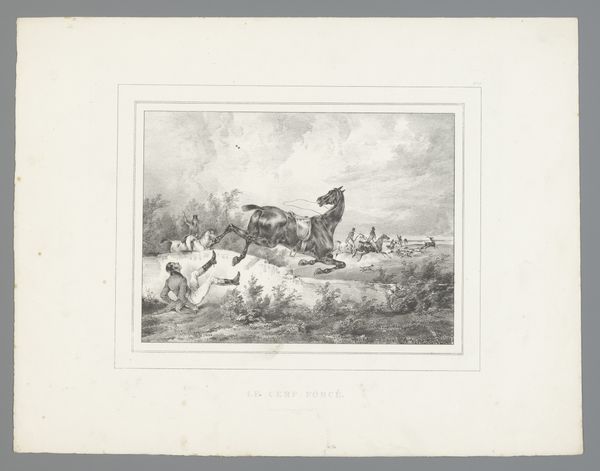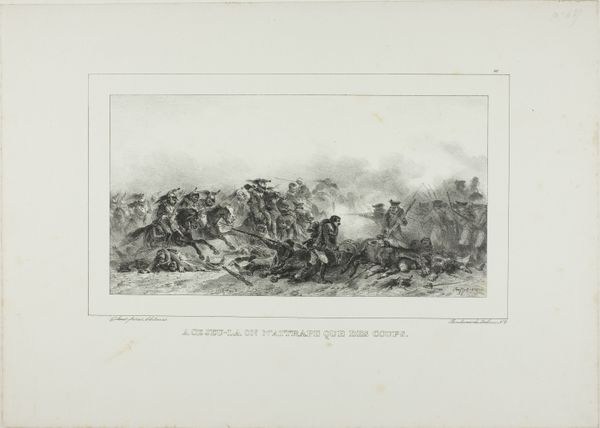
#
white colour balance
#
photo of handprinted image
#
pale palette
#
pastel soft colours
#
muted colour palette
#
pale colours
#
light coloured
#
white palette
#
pale shade
#
soft colour palette
Dimensions: height 364 mm, width 552 mm
Copyright: Rijks Museum: Open Domain
Auguste Raffet created this lithograph, titled 'Bouwen aan de mijngang', in 1832. It portrays a scene of intense labor and military engineering. The print depicts French soldiers building a mine gallery, likely during a siege or military campaign. Made during the July Monarchy in France, the image creates meaning through the visual codes of military heroism and industriousness. France, at this time, was actively involved in colonial expansion and internal consolidation of power. We see an emphasis on the industriousness of the military, aligning with the state's broader efforts to project strength and control. The focus on engineering and construction reflects the importance of technological advancement in warfare and territorial control. To understand it better, we can research military campaigns of that era and studies on military engineering. What we find is that art serves as a tool for shaping public perceptions of military actions. The meaning of this art is contingent on the social and institutional context in which it was produced and consumed.
Comments
No comments
Be the first to comment and join the conversation on the ultimate creative platform.
